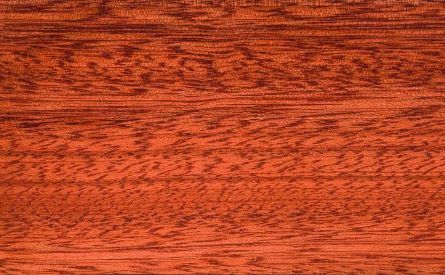SANTA MARIA
Santa Maria / Calophyllum Brasiliense

Local Names
Distribution & Tree
Wood Appearance
Processing Properties
Its stability is comparable to that of big-leaf mahogany (Swietenia macrophylla). It’s easy to mill and cut. It can be sanded easily although the presence of resin can have a dulling effect on equipment. Machining can be performed easily and finishing and gluing are good. Pre-drilling is recommended as it can split. The species shrinkage characteristics are favorable to stability once the wood has been properly dried.
Strength & Durability
Wood Uses
Ecological & Social Importance
| Reference Species | ||||
| Technical Characteristics | Santa Maria | Teak | Red Oak | |
| Density | kg/m3 | 641 | 624 | 700 |
| Janka Hardness | kgf | 508 | 500 | 553 |
| Bending Stiffness (Modulus of Elasticity) | GPa | 14.8 | 13.7 | 12.1 |
| Bending Strength (Modulus of Rupture) | MPa | 94.0 | 97.1 | 99.2 |
| Crushing Strength | MPa | 58.0 | 54.8 | 46.8 |
| Shrinkage, Radial | % | 3.9% | 2.6% | 4.0% |
| Shrinkage, Tangential | % | 8.9% | 5.3% | 8.6% |
| Shrinkage, Volumetric | % | 14.0% | 7.2% | 13.7% |
| T/R Ratio | 2.3 | 2.0 | 2.2 | |
| Values determined at 12% humidity | ||||
|---|---|---|---|---|
DENSITY
JANKA HARDNESS
BENDING STIFFNESS
BENDING STRENGTH
CRUSHING STRENGTH
SHRINKAGE
Values are for reference only and cannot be guaranteed. Wood is a natural material and physical and mechanical properties may vary depending on age, genetics, and other factors. We encourage customers to consult the references provided in the bibliography. For further explanations of wood’s key technical characteristics, an excellent resource is the Wood Database with articles on Density (average dried weight); Janka hardness; Elastic Modulus; Rupture Modulus; Crushing Strength; Radial, Tangential and Volumetric Shrinkage.






